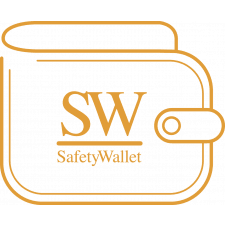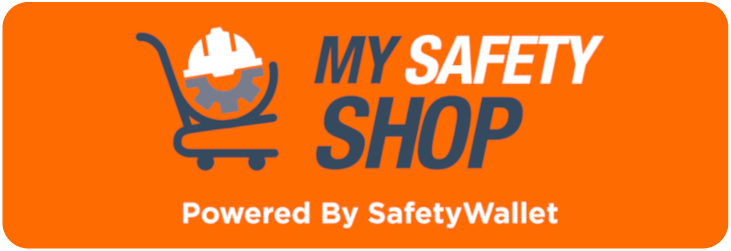The Importance of First Aid Training: Best Practices for Workplace Health and Safety
In today’s fast-paced and dynamic work environments, ensuring the health and safety of employees is not just a legal obligation but also a critical factor in fostering productivity and overall well-being. From bustling office spaces and industrial settings to remote locations like mines or rural areas, accidents and emergencies can happen unexpectedly. A swift, competent response can make all the difference, potentially saving lives and reducing the severity of injuries. One of the most effective ways to prepare for such situations is through comprehensive first aid training, which empowers employees to act decisively when faced with an emergency.
First aid training doesn’t just equip staff with life-saving skills—it contributes to building a workplace culture where safety is a shared responsibility. It reinforces the message that everyone plays a role in maintaining a secure environment. This is especially important in South Africa, where diverse industries like construction, agriculture, and tourism present a wide range of safety challenges. Whether it’s a minor injury or a life-threatening incident, having trained first aiders on-site ensures that help is readily available, potentially reducing the strain on public health resources and minimising downtime in the workplace.
In this blog, we’ll explore why first aid training is essential in the modern workplace, particularly in South Africa's unique and varied landscape. We will dive into the best practices for implementing training effectively and highlight the procedures that every organisation should have in place to ensure a prompt and appropriate response to emergencies. By prioritising first aid training, businesses can not only meet regulatory requirements but also protect their most valuable asset: their people.
If there is any way that we can assist, kindly leave your details for one of our Expert Consultants to give you a no-obligation call.
Why First Aid Training is Essential
First aid training is not merely a legal requirement; it plays a vital role in workplace safety. Accidents can happen at any time, and having trained personnel on-site can significantly improve the outcome of an emergency. Here are a few compelling reasons why first aid training is essential for South African businesses:
1. Immediate Response: In emergencies, every second counts. Employees who have undergone first aid training can provide immediate assistance, which could save lives or reduce the severity of injuries. This is particularly crucial in industries with high injury risks, such as mining, construction, and manufacturing—common sectors in South Africa.
2. Increased Confidence: Employees who are confident in their ability to handle emergencies are likely to respond more quickly and effectively. This confidence comes from knowing they have the necessary skills to help. In South Africa, where some workplaces may be located far from medical facilities, having a well-trained team on-site is invaluable.
3. Promotes a Culture of Safety: First aid training encourages a proactive approach to workplace safety. When staff are trained, they tend to prioritise safety measures and recognise potential hazards before they lead to accidents. This leads to a safer environment and fewer incidents.
4. Legal Compliance: Many industries in South Africa, such as mining and construction, are legally required to have trained first aid personnel on-site. Failure to comply with these regulations not only puts employees at risk but also exposes the business to legal and financial penalties. By investing in first aid training, businesses can avoid these liabilities while ensuring the wellbeing of their staff.
Best Practices for First Aid Training
To make the most of first aid training in your organisation, it’s essential to follow these best practices:
1. Tailored Training Programmes
Every workplace is unique, and so are its risks. It’s important to tailor first aid training to address the specific hazards present in your environment. For example, a factory handling chemicals will require different training than an office environment. By customising the training, employees will be better prepared to handle the emergencies they are most likely to encounter..
2. Regular Refresher Courses
First aid skills can diminish over time, and procedures may also evolve. To ensure employees remain proficient, schedule regular refresher courses. These sessions reinforce knowledge and introduce any updates to first aid protocols, keeping everyone up to date.
3. Hands-On Practice
While theoretical knowledge is important, it is not sufficient on its own. Hands-on practice should be a key part of any first aid training programme. Employees need the opportunity to apply their skills in realistic scenarios, helping them build confidence and competence. This is especially critical in high-risk industries where quick, practical responses can make a life-or-death difference.
4. Develop an Emergency Action Plan
A well-structured emergency action plan is essential for any workplace. The plan should outline the procedures to follow in the event of different types of incidents, such as fires, chemical spills, or medical emergencies. Ensure that all employees are familiar with this plan and know their roles in an emergency. Regular drills are also necessary to keep the plan fresh in everyone’s mind.
5. Encourage Open Communication
Encouraging employees to openly discuss safety concerns or report near misses can help identify potential hazards before they lead to accidents. A culture of open communication will allow for continual improvements in workplace safety protocols.
Essential Procedures for First Aid Response
When an incident occurs, clear and effective procedures are crucial for a successful response. Here are the essential steps to follow during a first aid emergency:
1. Assess the Situation
Before attempting to assist, take a moment to assess the scene for potential dangers. Ensure it’s safe for you to approach the injured person, as you should never put yourself at risk. In a South African context, where different work environments have varying safety concerns (e.g., wildlife in rural settings or hazardous materials in industrial sites), situational awareness is key.
2. Call for Help
If the situation is serious, immediately contact emergency services. In South Africa, the nationwide emergency number is 112. Provide as much information as possible, including the location, nature of the injury or emergency, and any immediate threats.
3. Administer First Aid
Once the area is secure and help is on the way, begin administering first aid based on your training. This could include CPR, controlling bleeding, or treating shock. In rural or remote areas, where professional medical help may take longer to arrive, basic first aid could be a lifesaver.
4. Document the Incident
After the situation is under control, document the incident in detail. Include a clear account of what happened, the actions taken, and any witnesses. This documentation is essential not only for legal compliance but also for reviewing safety practices and identifying any areas for improvement.
5. Review and Reflect
After every incident, it’s important to conduct a review. Discuss what happened, what was done well, and what could be improved. This reflection is vital for enhancing future responses and ensuring continuous improvement in your safety practices.
In Summary
Investing in first aid training is a critical step in safeguarding the health and safety of your workforce. By following best practices, implementing tailored training programmes, and creating clear procedures, organisations can foster a safer work environment. First aid training not only helps employees respond effectively to emergencies but also empowers them to take proactive measures to prevent accidents.
In South Africa, where various industries face unique safety challenges, well-trained staff can make all the difference in reducing the impact of workplace incidents. For more information on first aid training and how to implement effective health and safety procedures in your organisation, contact a local provider. Together, we can build a culture of safety that benefits everyone.
Not using Walli yet? Scan the below QR Code to gain access
Elevate Your Health and Safety Management
Embrace our Triple P approach and transform your workplace into a haven of safety and productivity.
The SafetyWallet Triple P Health and Safety Management System is available at no cost to all SafetyWallet subscribers, and supported by MAKROSAFE ( an Authorised Dealership of SafetyWallet) team members. This means you are able to get a state-of-the-art system with operational support for your entity thereby improving the health and safety in the workplace as well as improving your legal compliance to Occupational Health and Safety Legislation.
Click on the image below to find a SafetyWallet Solution that suits your business (Branch/Site specific) and get the benefits along with the subscription:
To find out what other Additional Services we offer, please click on the picture below:
SAFETYWALLET In Co-operation with MAKROSAFE and MY SAFETY SHOP
Disclaimer:
Walli can make mistakes. Consider checking important information and please speak to SafetyWallet's support team, should you be in doubt. Please also see: https://www.safetywallet.co.za/termsandconditions







Leave a comment